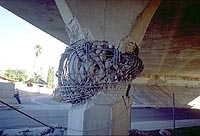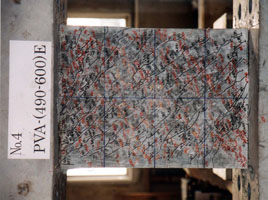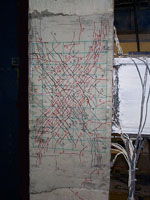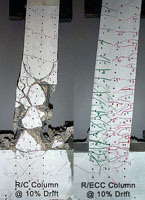 Overview
Overview
Within the last couple of years, a series of moderate to strong earthquakes hit population centers including those in Columbia, India, Mexico, Turkey, Greece, Taiwan, San Salvador, and the US (Seattle and Washington), causing severe damage to constructed facilities. While design detailing may improve the performance of structures, the intrinsic brittleness of concrete contributes to common failure modes such as bond splitting, cover spalling, core crushing, and steel buckling observed in many ECC, having tensile strain capacity of 3-6% (300-600 times that of concrete)

offers the potential to overcome many of these problems. Innovative research, combining materials microstructure tailoring and structural composite design, are necessary to translate ECC materials to ECC structural technologies to contribute to mitigation of earthquake hazards. Current research efforts at the ACE-MRL focus on the development of an innovative auto-adaptive frame system and on high energy absorption devices based on ECC technology.
Projects
- Reinforced ECC Structural Applications
- ECC Structural Application in Steel Beam/Concrete Column Connection
- FRP Reinforced ECC Beam
- Anti-seismic Mechanical Fuse Elements
- Structural Elements with High Strength Reliability


